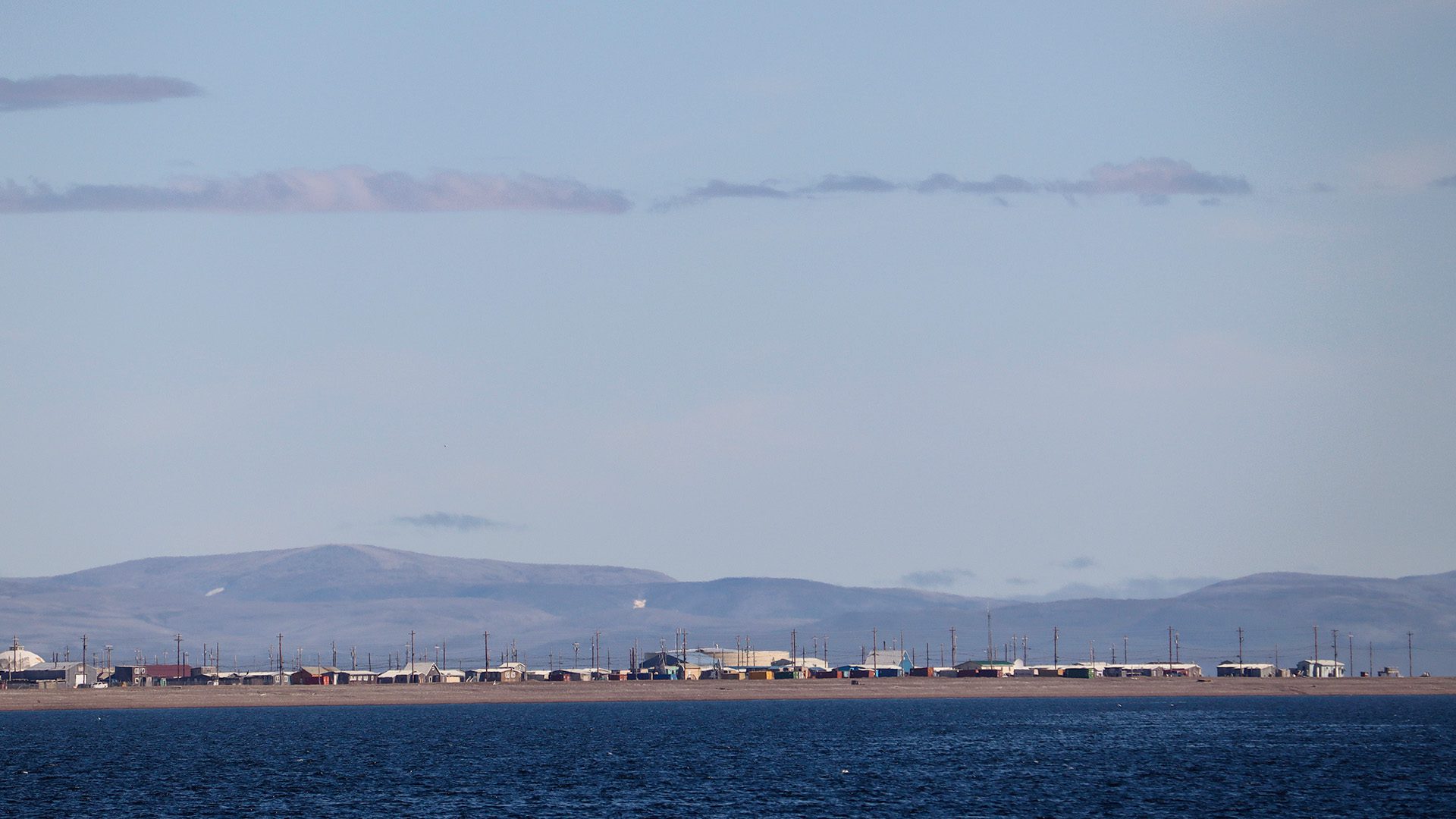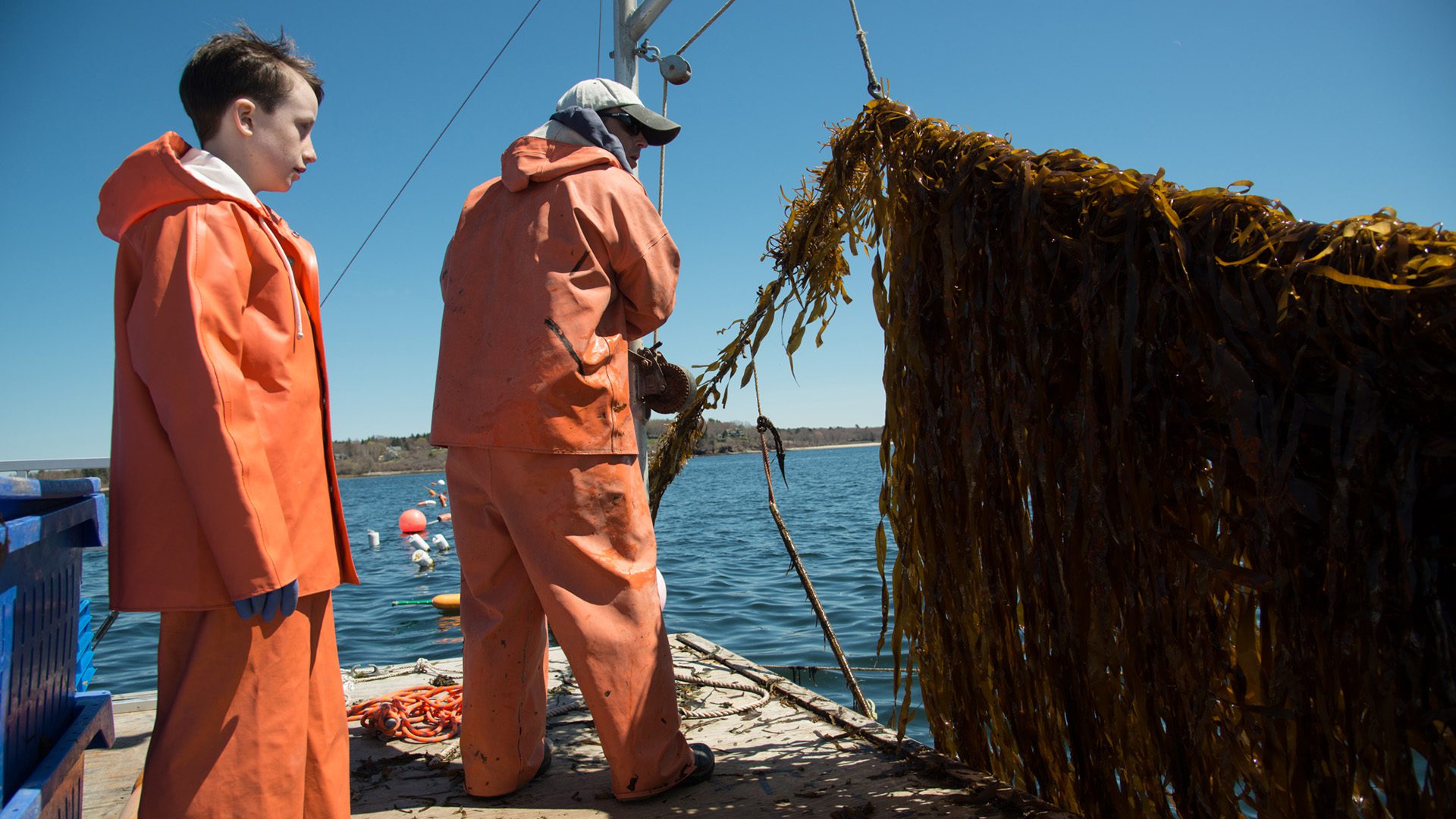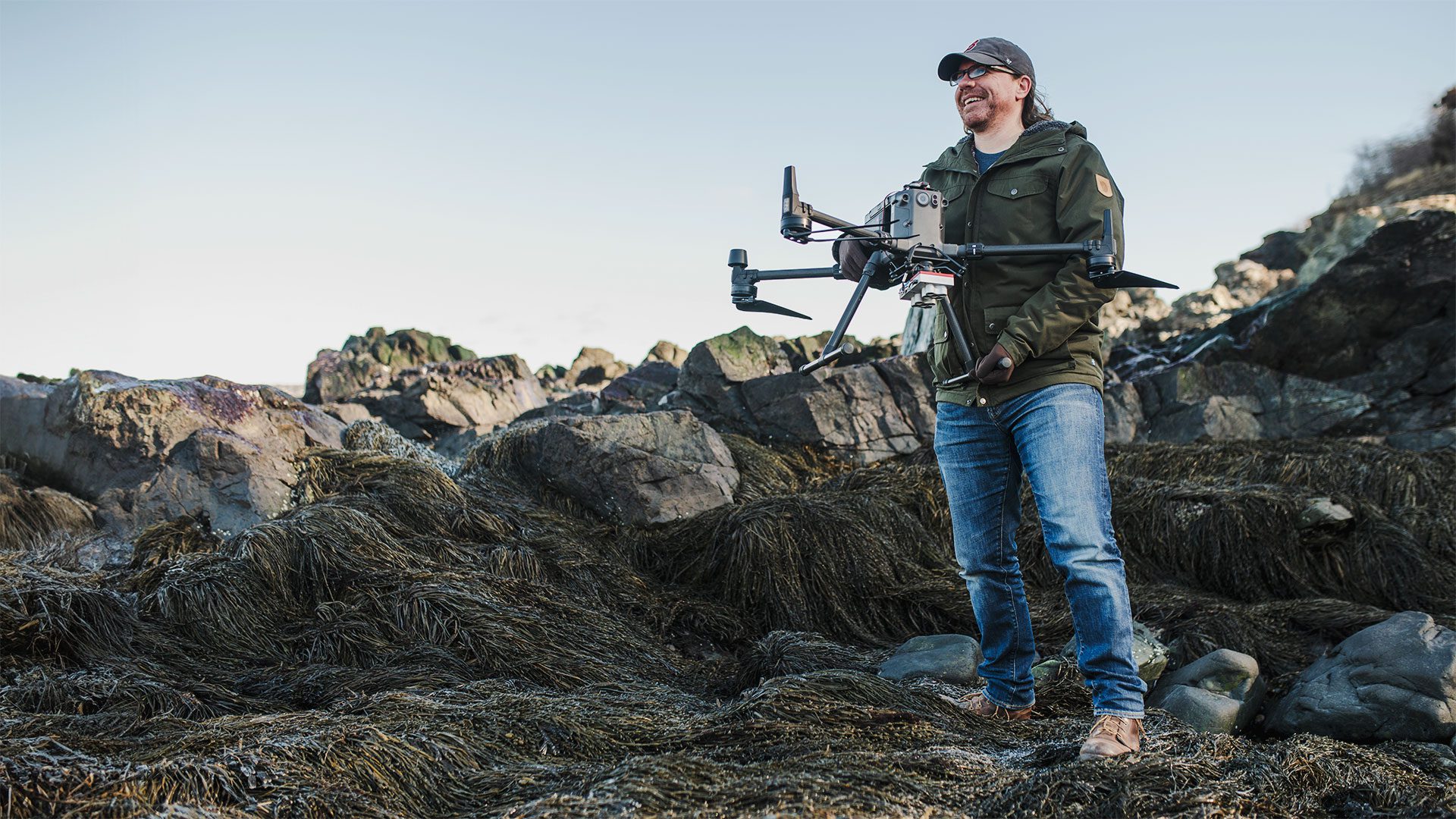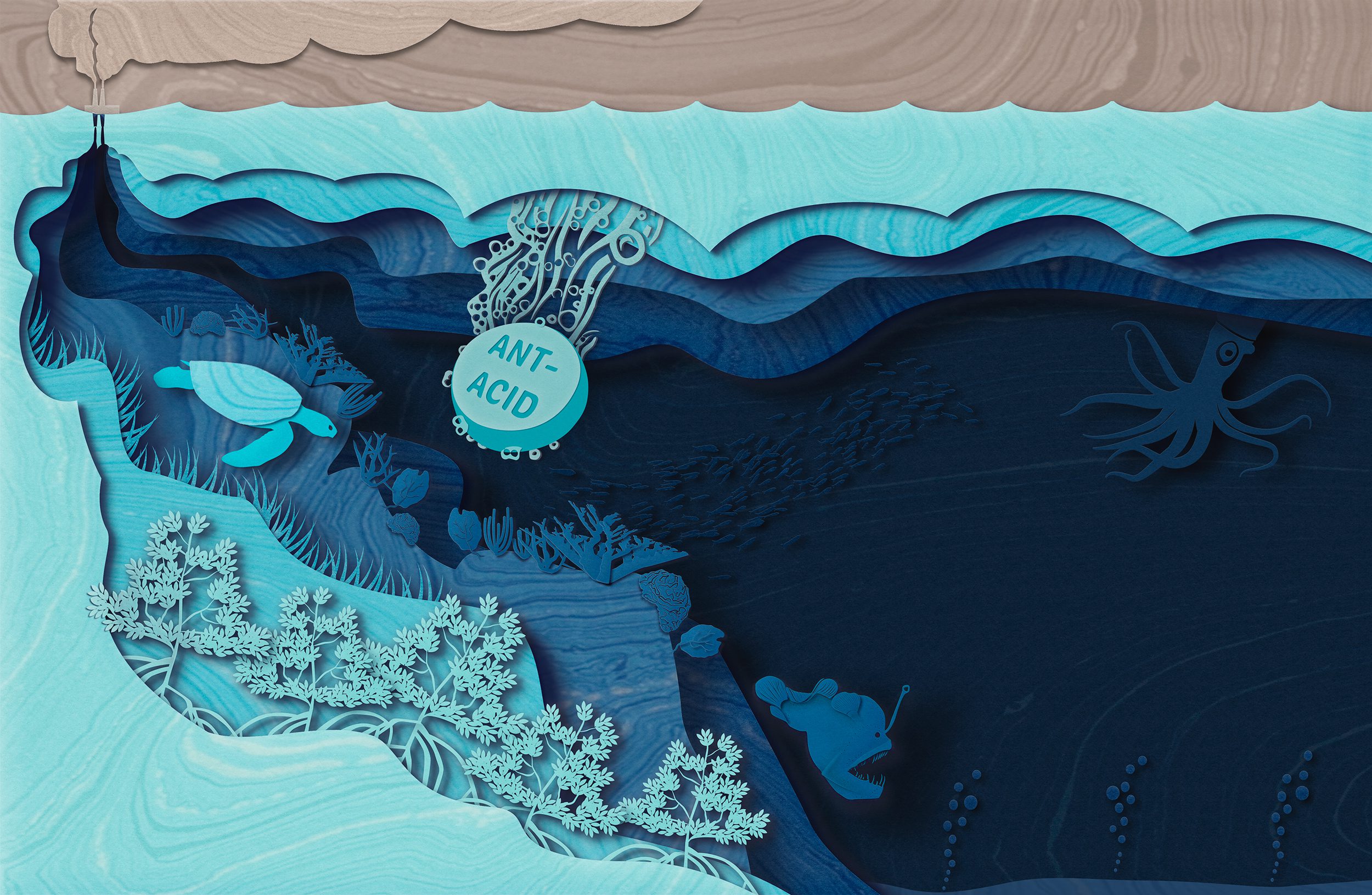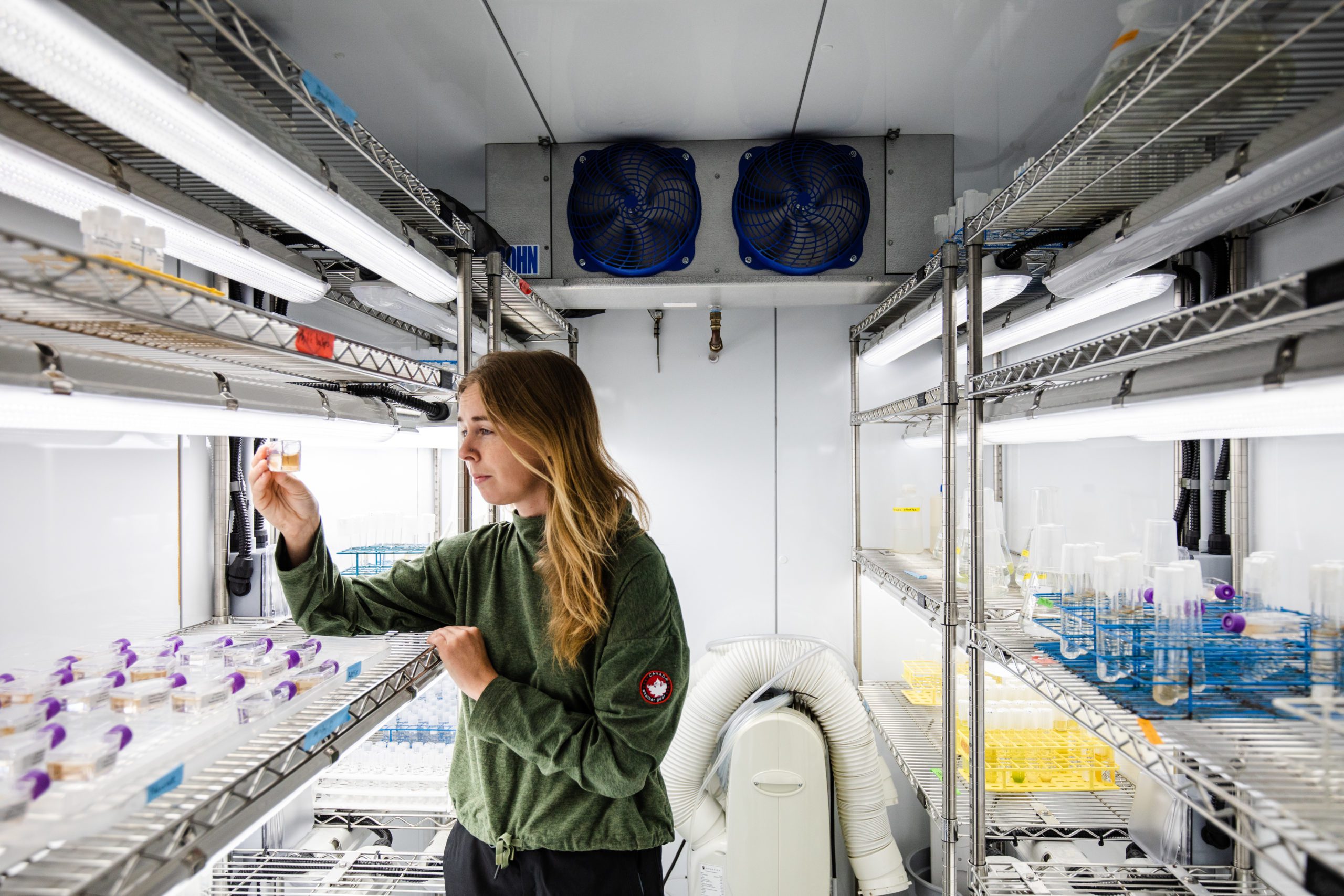
Are warming Alaskan Arctic waters a new toxic algal hotspot?
WHOI researchers warn Arctic communities following detection of a harmful bloom
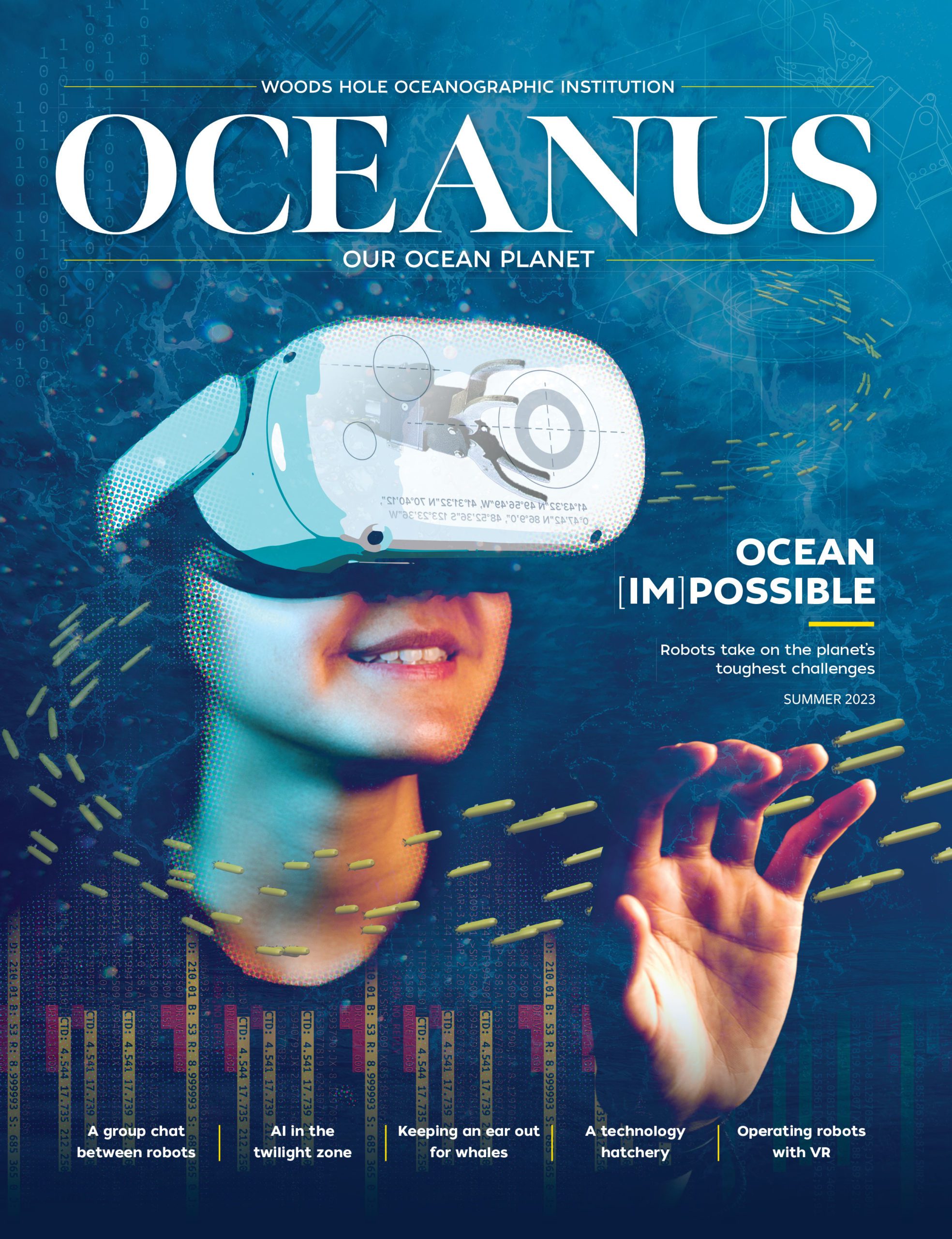 This article printed in Oceanus Summer 2023
This article printed in Oceanus Summer 2023
Estimated reading time: 6 minutes
On her way to the Bering Strait for the fifth time, MIT-WHOI PhD student Evie Fachon hoped to learn more about a toxic species of phytoplankton known as Alexandrium catenella. With the Alaskan Arctic warming faster than almost anywhere in the world, she and other members of the Anderson Research Lab were concerned about the possible northward spread of this dangerous species, and since 2018, made multiple trips to sample the icy waters of the Bering Strait and the Chukchi sea to its north. Instead of a routine cruise, the team’s research became the center of the first real-time detection of an unprecedented toxic bloom in Alaskan Arctic waters, necessitating multiple risk advisories to remote communities.
Aboard Alaska Inc.’s support vessel R/V Norseman II, Fachon carried a draft of a health advisory intended to warn residents in the sparse communities of the Alaskan Arctic to not eat shellfish or other potentially toxic marine animals. She, along with her advisor, WHOI senior biologist Don Anderson, and the cruise’s Chief Scientist Bob Pickart, agreed with local health officials and Alaska Sea Grant to distribute it if the science team found concentrations of a toxic algae species above 1,000 cells per liter—a threshold known to be dangerous. On July 20, 2022, just five days into the 28-day cruise, the team’s automated microscope, the Imaging Flow Cytobot (IFCB), detected well over 18,000 cells per liter outside of Gambell, Alaska. A few days later, 30,000. Weeks later, 100,000.
“When we’ve been up there in the past, we’ve left out of Nome, Alaska, and either not seen anything or only seen very patchy blooms at relatively low densities,” says Fachon. “So, I was really not expecting to warn communities so soon after we left the dock.”
The culprit, Alexandrium, is a common catalyst behind harmful algal blooms (HABs) around the world. In areas like the Gulf of Maine, its toxins—which cause paralysis and death in humans and aquatic animals—have tainted annual shellfish harvests for decades, leading to recalls and closures. In the rugged Alaskan Arctic, where subsistence harvesting of marine life is the primary food source for many coastal communities, the risks of contamination are significant and broad. There, in the absence of routine monitoring programs, checks on food safety are hard to come by. While an advisory provides a degree of protection, it would also likely mean that many would have to buy food at grocery stores, incurring expenses they otherwise wouldn’t have to bear.
Twenty-four hours after the research team notified shoreside health officials, several email advisories were sent out to residents in six major communities across the Bering Strait and Seward Peninsula. Meanwhile, the Norseman II team continued tracking the bloom north.
“We were fortunate on the timing of this,” says Emma Pate, an environmental coordinator with Norton Sound Health Corporation who helped disseminate the advisory. If this advisory wasn’t issued, food with high concentrations of the algae could have been consumed, she adds.
According to Pate, one shellfish sample sent to NOAA’s Northwest Fisheries Science Center for analysis had five times the allowable level of paralytic toxins permissible by the FDA’s national food safety requirements. While shellfish are not the main staple of the Alaskan Arctic diet, walrus, whale, and sea birds that consume them, along with filter-feeding animals, are still at risk of accumulating toxins.
For now, the region seems to have dodged a major bullet. To date, there have been no reported illnesses or deaths. Still, the unprecedented scale of this bloom has researchers weary that residents may not be so lucky if it happens again.
“In the Gulf of Maine, where we’ve studied Alexandrium and the resulting shellfish closures, it’s typical for us to see a few thousand cells per liter, and that is more than enough to cause dangerous levels of toxin in shellfish,” says Anderson, who directs the U.S. National Office for Harmful Algal Blooms. “But it’s a rare event when we see 20 to 30,000 or more, so this was a shock.”
Historically, the frigid subarctic waters of the Bering Strait and Chukchi Sea northwest of Alaska have been a buffer against frequent HABs. As Alexandrium enters the strait from the northern Bering Sea, the cells transition into a non-swimming cyst state, sinking to the seafloor where they accumulate in the sediments. There, they would have stayed in this dormant state, with only a relative few hatching due to extremely cold temperatures. That's changed with planetary warming.
Since 1999, warming from climate change has increased average bottom water temperatures near the Alaskan cyst bed by 2°C (~4°F), more than doubling the rate at which these cysts now hatch and advancing the start of the seasonal bloom by three weeks. In total, this Alaskan Arctic “cyst bed,” is more than 15 times larger than that in the Gulf of Maine and is one of the densest in the world. Sometimes referred to as “a sleeping giant,” it has become a point of concern for Anderson and his colleagues, who fear it could be the source of recurrent, massive blooms as waters warm. If the giant does wake, Anderson and Fachon worry it could create a cycle of locally-originating harmful algal blooms in the Chukchi Sea and north Bering Strait—something that Alaskan Arctic monitoring efforts aren’t yet ready for.
“We have had to jump lightyears forward on our HAB monitoring since this happened,” says Pate, who was trialing a HAB water monitoring program in 2020 before being interrupted by the COVID pandemic. “We are definitely still looking to get more microscopes, so [HAB] analysis can eventually take place in the communities.”
Fortunately, portable technologies like the IFCB continue to streamline HAB detection and analysis. Before the device’s first use in regional HAB-detection in 2018, hundreds of water samples from the region had to be flown across the country to WHOI, where algal cells were meticulously counted and analyzed under a microscope—a process that often took months. By then, an advisory to coastal communities would have been useless.
“We’ll never know if we prevented people from getting sick or dying,” says Anderson, “But I’d like to think we made a difference.”
Today, the IFCB can help scientists image and analyze samples of tumbling Alexandrium cells round-the-clock, without anyone ever stepping off the boat. With it, WHOI’s HAB scientists were able to provide Alaskan Arctic residents with the first real-time risk advisories, something Anderson and Fachon herald as a major advancement.
“Right now, this region of Alaska is missing offshore monitoring,” says Fachon. “If we weren’t there at the time we were, [this HAB] is the kind of thing we might not have found out about until after someone got sick or died. Now we have demonstrated that technology like the IFCB could be a valuable monitoring tool for the region going forward."
Funding for this cruise and the HAB-associated research was provided by the National Science Foundation, The National Oceanic and Atmospheric Administration, and the National Institutes of Environmental Health Sciences. The Imaging Flow CytoBot (IFCB) used in this study was supported by WHOI scientist Mike Brosnahan and technician Mrunmayee Pathare. The instrument was originally developed by WHOI scientist Heidi Sosik.



